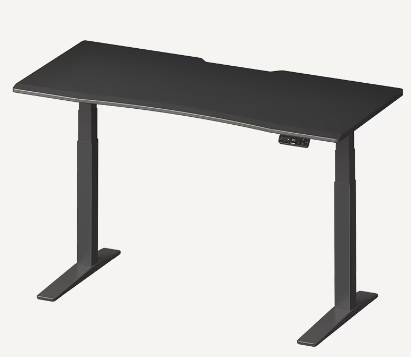The Rise of BIM Services in Emerging Markets: Exploring Global Adoption
In the bustling world of architecture, engineering, and construction (AEC), a quiet transformation is underway—one that is not just about erecting structures that touch the sky but also about building processes that achieve unparalleled efficiency and sustainability.
This transformation is epitomized by the ascent of Building Information Modeling (BIM) services, and it is not just happening within the well-worn corners of developed nations; emerging markets are also fast becoming arenas where BIM reshapes how buildings are conceived, designed, and brought to life.
BIM 101: What Are BIM Services?
Before we unfurl the narrative surrounding BIM’s ascent in emerging markets, it’s essential to understand the foundation—what exactly are BIM services? BIM is a digital representation of a facility’s physical and functional characteristics. It’s a shared knowledge resource for information about a building, leveraging intelligent 3D models to provide insights for creating and managing construction projects faster, more economically, and with less environmental impact than traditional methods.
The Three Dimensions of BIM
BIM doesn’t just stay in its digital lane. It adds depth to the conversation with the triumvirate of dimensions:
- 3D BIM – The spatial representation of the building provides a sense of how the structure would look physically.
- 4D BIM – This incorporates time, enabling the creation of a construction sequence, aiding project planning, and showing stages of building over time.
- 5D BIM – Time marries cost in this dimension, clearly visualizing the cost impacts of design decisions.
Breaking Ground in Emerging Markets
The burgeoning infrastructure needs in Brazil, India, and South Africa are not merely providing canvases for architectural expression; they’re laying the foundation for BIM to thrive. Here’s why:
- Eager to Leapfrog Legacy
In emerging markets, an absence of entrenched building design technologies often means that the leap to BIM is less a technological disruption than an expeditious leapfrog over legacy systems, directly integrating the latest advancements into the industry.
- Addressing Ambitious Urbanization
Rapid urbanization in emerging economies means that construction projects’ sheer scale and complexity are often more intricate than those in Western countries. BIM offers a lantern in the labyrinth, enabling planners and builders to make better decisions.
The Technological Affluence
With the surge in affordable high-speed internet and the availability of sophisticated hardware, the technical infrastructure to support BIM in emerging markets is taking shape. Nations once faced with the challenge of basic internet connectivity now wield the bandwidth to support BIM’s complex data and design-sharing requirements.
- Mobile Adoption Accelerating BIM
In a region where desktop computer penetration is sporadic, mobile devices are stepping in as the conduits for BIM data. Mobile BIM apps are making the technology accessible to a growing pool of professionals, from the urban capitals to the rural construction sites.
The Education and Training Odyssey
Integrating BIM into a market isn’t just about setting up servers and launching apps; it’s also about nurturing a cohort of professionals who can harness this powerful toolset.
- Building for the Future
Universities and vocational institutions in emerging markets are now weaving BIM skills into their curriculum, ensuring a future workforce adept in digital construction.
- Lifelong Learning
Beyond academia, existing professionals are undertaking upskilling and reskilling programs, often spearheaded by BIM service providers, ensuring that the transition to digital workflows is not just generational but also swiftly encompassing the current workforce.
The Social and Economic Impacts
BIM’s reach goes deeper than steel and concrete; it impacts social and economic spheres.
- Social Equity through Infrastructure
Inclusive BIM strategies ensure that infrastructure development in emerging markets doesn’t just serve the affluent but uplifts entire communities, contributing to a more equitable society.
- Economic Efficiency
BIM’s crowning glory is the emulation of efficiency in labor, material, time, or cost. In the resource-hungry economies of emerging markets, such optimization could signify the difference between fiscal constraint and release.
The Next Horizon
The path to the comprehensive adoption of BIM in emerging markets may be littered with challenges – from standardizing practices to ensuring the inclusivity of technological growth across the economic strata. Yet, the trajectory is clear — BIM is not a trend but a tidal change in the AEC industry, and emerging markets are its field of fruition.
- Collaborative Synergy
Partnerships between global BIM leaders and local firms create synergies where collective knowledge is shared, solutions are tailored, and innovation is incentivized.
- Sustainable Vision
With a heightened global focus on sustainability, BIM’s capacity to optimize environmental impact is a promise that emerging markets are eager to realize, as it aligns with their goals for sustainable development.
Conclusion
In the chronicle of global development, the chapter on BIM services in emerging markets is still being written, page by page, project by project. The ink is laden with the promise of a more connected, efficient, and sustainable built environment that harmonizes human ingenuity with digital fervor.
For professionals in the AEC realm, be it the seasoned sopranos or the fresh-faced aspirants, the rise of BIM services in emerging markets is a call to harmonize with the rising crescendo of digitization. It’s an opportunity to witness transformation and play a part in orchestrating it. Whether you’re in Mumbai, Nairobi, or Jakarta, the revolution’s blueprint is digitized, and the time to draw on it is now.







